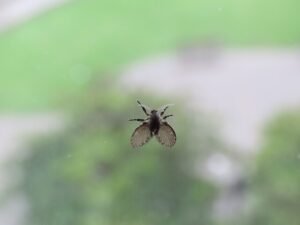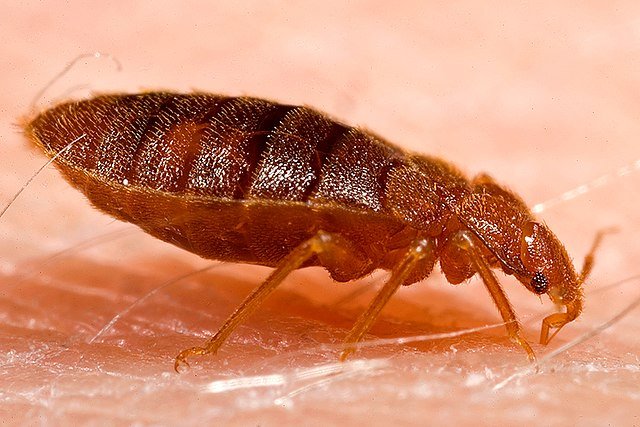Drain Midges in Bathrooms
 Many UK and European homeowners are puzzled when they see tiny fuzzy flies gathering around sinks or bathtubs. These are drain midges (Psychoda spp.), sometimes called bathroom moth flies or sink gnats. They look harmless, but once they breed inside a drain, the numbers can explode. I’ve treated hundreds of such infestations, and the pattern is always the same: unseen sludge, moisture, and warmth create the perfect home for these midges.
Many UK and European homeowners are puzzled when they see tiny fuzzy flies gathering around sinks or bathtubs. These are drain midges (Psychoda spp.), sometimes called bathroom moth flies or sink gnats. They look harmless, but once they breed inside a drain, the numbers can explode. I’ve treated hundreds of such infestations, and the pattern is always the same: unseen sludge, moisture, and warmth create the perfect home for these midges.
In this guide, I’ll explain what drain midges are, how they live, why they keep coming back, and the most reliable ways—DIY and professional—to remove them for good.
Identification
Adult drain midges are very small—about 1.5 to 5 millimetres long. Their wings and body are covered in fine hairs, giving them a “dusty” or moth-like appearance. Colours range from light grey to brown. When resting, they hold their wings in a roof shape, and their flight is short and uneven—more of a flutter than a straight line.
You’ll normally see them on bathroom tiles, mirrors, or the wall near a sink or shower. If you disturb them, they hop a few centimetres, then land again. Unlike fruit flies that swarm around fruit or vinegar, drain midges never leave the wet area.
Biology and Ecology
The species most often found indoors belong to Psychoda alternata and Clogmia albipunctata. Females lay eggs directly in the gelatinous film inside drain pipes, traps, or overflow holes. Within two days, tiny worm-like larvae hatch and feed on the organic slime made of soap residue, grease, hair, and bacteria.
A complete life cycle—from egg to adult—can be finished in only two to three weeks when temperatures stay above 20 °C. Adults live roughly one week, enough time to reproduce several generations inside a single bathroom. The larvae are aquatic or semi-aquatic, which is why you rarely see them unless you remove the drain cover.
Global Distribution
Drain midges are found worldwide, but indoor infestations are more frequent in temperate and tropical climates. In the UK and Northern Europe, they become more active in summer when warm, humid air builds up indoors. In Australia and Southeast Asia, they breed all year.
In the US, infestations are common in commercial kitchens, nursing homes, and hospitals—anywhere with old plumbing and organic build-up.
Risks and Damage
Drain midges don’t bite or sting. They don’t eat human food either. However, they signal that drains are dirty or partly blocked, which is a hygiene concern—especially in food premises.
In heavy infestations, adult midges can appear on clean dishes or walls, creating a negative impression in restaurants or hotels.
Medical studies show that inhaling large numbers of midge fragments may trigger mild respiratory allergies, though such cases are rare. Their main “damage” is psychological and reputational rather than physical.
Signs of Infestation
Clusters of tiny fuzzy flies near sinks, bathtubs, or floor drains.
Flies resting on tiles, mirrors, or shower curtains.
Return of adults within 24 hours after cleaning the surface.
A faint musty smell from stagnant water in the trap.
In severe cases, larvae visible when removing the drain cap.
A simple test I use: place clear adhesive tape over the drain opening overnight. If small flies are caught underneath, that’s your breeding site.
Control Methods
1. Mechanical Cleaning
The root of the problem is always organic sludge.
Remove drain covers and scrub the inside with a flexible drain brush.
Pour boiling water to loosen grease.
Use an enzyme-based drain cleaner rather than bleach; enzymes digest the slime instead of just killing surface bacteria.
2. Moisture Management
Drain midges love stagnant water.
Run water regularly through unused drains.
Fix leaking traps or joints under sinks.
Improve ventilation in bathrooms using an extractor fan or open window.
3. DIY Monitoring and Traps
Sticky tape test confirms breeding points.
Small apple-cider-vinegar traps or UV light traps catch adults but won’t remove the source.
4. Chemical and Professional Treatment
If midges return after proper cleaning, the infestation may come from hidden pipes or floor drains.
Pest-control professionals can:
Apply foaming biocides or insect growth regulators (IGRs) that reach deep into pipes.
Use steam or high-pressure flushing to remove sludge.
Inspect septic tanks or sump pumps where breeding might continue unseen.
Advanced Approaches
In hotels or restaurants, I usually recommend an Integrated Pest Management (IPM) plan:
Routine drain inspection and maintenance schedule.
Bio-foam enzyme treatment every 3 months.
Moisture and air-flow monitoring.
Staff training to report early signs.
Modern smart sensors can even alert managers when humidity and organic load inside drains reach levels that allow breeding. This approach reduces chemical use and keeps hygiene standards high.
Cultural and Historical Context
Drain midges first appeared in pest-control literature in the early 1900s when urban sewage systems expanded. In Europe, they were called “filter flies” because they bred in sand filters of early treatment plants. Their nickname “moth fly” came later, due to their fuzzy wings.
Today, they’re part of urban life worldwide—an indicator of how humans and micro-ecosystems interact inside modern buildings. The presence of these midges reminds us that even the cleanest home can hide microbial life below the sink.
FAQ Section
Q 1: Do drain midges bite humans?
No. They cannot bite or sting; they feed only on organic debris.
Q 2: Why do they keep coming back after cleaning?
You likely removed surface grime but not the deep organic film. Use enzyme cleaners and a brush deep into the trap.
Q 3: Are drain midges dangerous to pets?
No direct harm, but pets may spread larvae if they drink from infested drains.
Q 4: Can bleach kill drain midges?
Bleach kills some larvae but doesn’t dissolve the gelatinous film. Use enzymes or professional foaming products.
Q 5: Are drain midges seasonal?
They peak in warm, humid months but can survive indoors year-round in heated bathrooms.
Q 6: When should I call a pest-control expert?
If midges return within a week of deep cleaning or appear in multiple bathrooms, professional inspection is needed to locate hidden breeding zones.
Final Thoughts
Drain midges (Psychoda spp.) are not dangerous pests, but they are persistent indicators of hidden moisture and dirt. In most of the infestations I’ve handled, the real issue wasn’t the flies—it was what was growing inside the pipes. Once you clean that layer of slime, the midges disappear naturally.
If you see them in your bathroom, take it as a reminder to clean and maintain your drains. Avoid heavy chemicals when possible; enzyme-based cleaners are safer for both people and plumbing. For commercial buildings—especially hotels, hospitals, and restaurants—professional drain maintenance programs are worth every penny.
Good plumbing hygiene equals no midges. It’s that simple.
Disclaimer
This article is for informational purposes only. Pest control laws and approved chemicals vary by country. For best results and legal safety, we strongly recommend contacting a licensed pest control professional in your local area. Always make sure that the pest control technician is properly certified or licensed, depending on your country’s regulations. It’s important to confirm that they only use approved products and apply them exactly as instructed on the product label. In most places in Europe, UK, or USA, following label directions is not just best practice—it’s the law.
Author
Nasos Iliopoulos
BSc Agronomist & Certified Pest Control Expert
Scientific Director – Advance Services (Athens, Greece)
Licensed Pest Control Business – Ministry of Rural Development & Food (GR)

